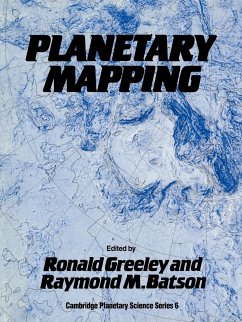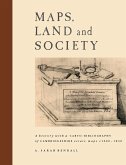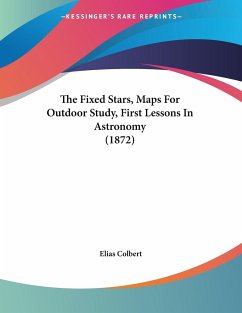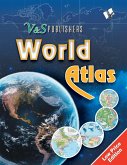Planetary Mapping describes the history and process of mapping planets and satellites beyond the Earth.
Planetary Mapping describes the history and process of mapping planets and satellites beyond the Earth. Mapping planetary bodies is a unique process much different from ordinary terrestrial cartography. Although many kinds of imaging systems have been launched into interplanetary space, nearly all of them were designed for purposes other than map-making. Thus, special mapping techniques described in this book had to be invented to make use of images from space. Furthermore, planets and satellites are difficult to depict in maps. For instance, unlike on Earth, on planetary bodies there are no shorelines, rivers, roads or political boundaries to guide the map-maker. The book begins with an introduction to the differences between terrestrial and planetary mapping and continues with a general discussion of the history of planetary mapping. The fundamentals of cartographic techniques are described in detail in the next chapter. This is followed by sections on planetary nomenclature, geodetic considerations, and topographic and geologic mapping.
Review quote:
"...an important reference book that fills a long-neglected gap in the literature and should be widely consulted by planetary investigators and other interested parties." Lunar and Planetary Institute Bulletin
"Since the field is distinct in many ways from terrestrial mapping...this book is likely to be a standard reference for many years and a useful introduction to the field for newcomers to planetary cartography....should appeal to both cartographers interested in an unfamiliar aspect of mapping and to astronomers who want to know more about maps of other worlds. Any large library should contain this book, and I can recommend this fascinating look at a little known aspect of cartography to lovers of both maps and space exploration." Philip J. Stooke, Cartographica
"...a wonderful find for both the researchers who use the planetary and satellite maps and for historians of planetary exploration....Greeley and Batson are indeed to be commended for compiling such a rich collection of chapters on this infrequently considered and important aspect of planetary exploration." EOS
"The editors have generally succeeded in showing how they, with their colleagues, have solved the many problems associated with planetary cartography to produce the most comprehensive series of maps now available. The result is by far the most comprehensive book on the subject yet written....it can safely be recommended to a wide audience. It is technical enough to be a convenient reference for planetary scientists, astronomers and their graduate students. Jargon is kept to a minimum and only a few sections are mathematical, so it should be accessible to any reader with a little background in cartography or space science. It should satisfy people with a wide variety of interests: astronomy, the space program, exploration and discovery and cartography itself. As the best book of its kind it should be in every public and academic library of any size and on the shelves of many individuals interested in space exploration and cartography." (Ontario) Geography
Table of contents:
Preface; List of contributors; 1. Introduction R. Greeley and R. M. Batson; 2. History of planetary cartography R. M. Batson, E. A. Whitaker and D. E. Wilhelms; 3. Cartography R. M. Batson; 4. Planetary nomenclature M. E. Strobell and H. Masursky; 5. Geodetic control M. E. Davies; 6. Topographic mapping S. S. C. Wu and F. J. Doyle; 7. Geologic mapping D. E. Wilhelms; Appendices R. M. Batson and J. L. Inge; Index.
Hinweis: Dieser Artikel kann nur an eine deutsche Lieferadresse ausgeliefert werden.
Planetary Mapping describes the history and process of mapping planets and satellites beyond the Earth. Mapping planetary bodies is a unique process much different from ordinary terrestrial cartography. Although many kinds of imaging systems have been launched into interplanetary space, nearly all of them were designed for purposes other than map-making. Thus, special mapping techniques described in this book had to be invented to make use of images from space. Furthermore, planets and satellites are difficult to depict in maps. For instance, unlike on Earth, on planetary bodies there are no shorelines, rivers, roads or political boundaries to guide the map-maker. The book begins with an introduction to the differences between terrestrial and planetary mapping and continues with a general discussion of the history of planetary mapping. The fundamentals of cartographic techniques are described in detail in the next chapter. This is followed by sections on planetary nomenclature, geodetic considerations, and topographic and geologic mapping.
Review quote:
"...an important reference book that fills a long-neglected gap in the literature and should be widely consulted by planetary investigators and other interested parties." Lunar and Planetary Institute Bulletin
"Since the field is distinct in many ways from terrestrial mapping...this book is likely to be a standard reference for many years and a useful introduction to the field for newcomers to planetary cartography....should appeal to both cartographers interested in an unfamiliar aspect of mapping and to astronomers who want to know more about maps of other worlds. Any large library should contain this book, and I can recommend this fascinating look at a little known aspect of cartography to lovers of both maps and space exploration." Philip J. Stooke, Cartographica
"...a wonderful find for both the researchers who use the planetary and satellite maps and for historians of planetary exploration....Greeley and Batson are indeed to be commended for compiling such a rich collection of chapters on this infrequently considered and important aspect of planetary exploration." EOS
"The editors have generally succeeded in showing how they, with their colleagues, have solved the many problems associated with planetary cartography to produce the most comprehensive series of maps now available. The result is by far the most comprehensive book on the subject yet written....it can safely be recommended to a wide audience. It is technical enough to be a convenient reference for planetary scientists, astronomers and their graduate students. Jargon is kept to a minimum and only a few sections are mathematical, so it should be accessible to any reader with a little background in cartography or space science. It should satisfy people with a wide variety of interests: astronomy, the space program, exploration and discovery and cartography itself. As the best book of its kind it should be in every public and academic library of any size and on the shelves of many individuals interested in space exploration and cartography." (Ontario) Geography
Table of contents:
Preface; List of contributors; 1. Introduction R. Greeley and R. M. Batson; 2. History of planetary cartography R. M. Batson, E. A. Whitaker and D. E. Wilhelms; 3. Cartography R. M. Batson; 4. Planetary nomenclature M. E. Strobell and H. Masursky; 5. Geodetic control M. E. Davies; 6. Topographic mapping S. S. C. Wu and F. J. Doyle; 7. Geologic mapping D. E. Wilhelms; Appendices R. M. Batson and J. L. Inge; Index.
Hinweis: Dieser Artikel kann nur an eine deutsche Lieferadresse ausgeliefert werden.








